As told through the lens of documentarian Frederick Wiseman, the story of the National Gallery is as layered, rich, and engaging as the masterpieces of art housed in the London institution.
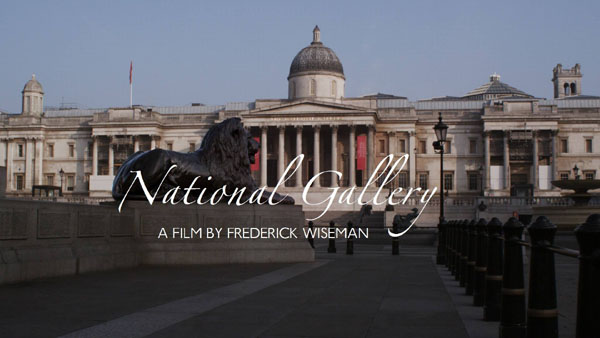
Visiting the National Gallery in London is an immersive experience. And so it is with watching National Gallery, the 2015 César Awards and 2014 London Film Festival nominee for Best Documentary Film — a three-hour on- and behind-the-scenes look at one of the great museums of the world from Emmy® Awards winner Frederick Wiseman (Hospital, Law and Order, Titicut Follies).
Through the special access granted him, Wiseman filmed 170 hours of footage and meticulously edited it to offer a narrative that gives the film’s viewers a 3D-like portrait of the National Gallery. What this affords is an appreciation of the nearly two-centuries-old institution and its art from different contexts and an understanding of its inner workings from both an observer’s and an insider’s perspective.
In various scenes we experience the National Gallery — one of London’s top attractions for tourists and locals alike — as we would in life: as members of the visiting public who stroll from room to room to gaze at and ponder over masterpieces of Western art from the Middle Ages to the 19th century, including works by renowned artists such as Caravaggio, da Vinci, Holbein, Michelangelo, Pissaro, Poussin, Rembrandt, Rubens, Stubbs, Titian, Turner, van Gogh, Velásquez, and Vermeer.
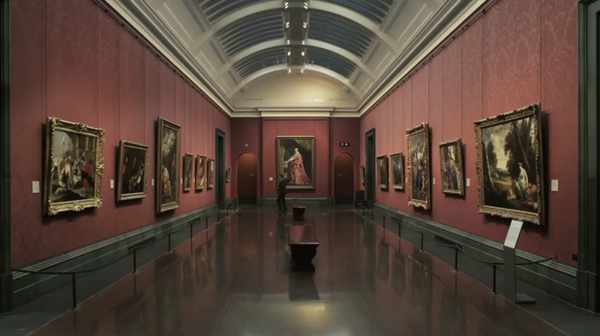
At other times we get to people-watch visitors: ones resting feet, eyes, and minds while seated on wood benches and leather settees; artists, as they create drawings of much-loved paintings; and those in the queue for the unprecedented “Leonardo da Vinci: Painter at the Court of Milan” exhibition, held 9 November 2011 – 5 February 2012 — “the most complete display of Leonardo’s rare surviving paintings ever held,” per the National Gallery.
Through bystanding and eavesdropping on gallery talks, we observe and nearly become one with the young children who are taught that the National Galley’s paintings tell stories, like the one of Moses; with the teens who discover that the centuries-old paintings displayed within the museum were the “early films” and “narrative entertainment” of their day; and with the adults who learn that ebony wood isn’t carved but scraped for frame-making.
We also get to participate, up close yet from a distance, in what privileged Gallery members and patrons do: exclusive soirées and events, such as a piano recital performed in the midst of priceless paintings, and the ballet performed during the major “Metamorphosis: Titian 2012” exhibition.
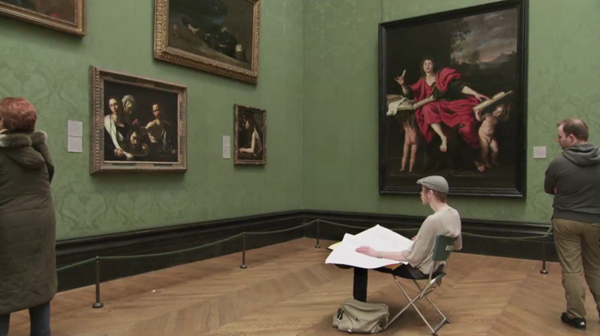
One can’t help but absorb and be fascinated by all the education about the Gallery’s art and efforts in the scenes of public gallery talks and lectures, members-only talks given by Nicholas Penny, the now-former Director of the National Gallery, and Larry Keith, the museum’s Director of Conservation, and their discussions with staff members.
How should we look at art? The question is posed and answered by a lecturer using images of da Vinci’s The Virgin of the Rocks, Velásquez’s The Rokeby Venus, Stubbs’ Whistlejacket, and van Gogh’s Sunflowers to illustrate ways in which teachers can educate their students about art and artists. An Old Testament story takes on new meaning when a docent deconstructs Rubens’ Samson and Delilah during a gallery talk, as does Poussin’s The Triumph of Pan during one by Nicholas Penny.
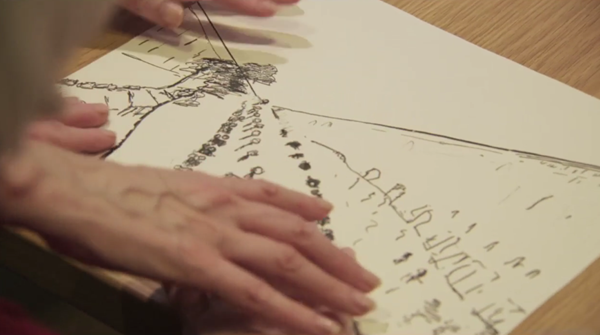
One thing I hadn’t ever considered before watching National Gallery is the way in which accommodations are made for the visually-impaired to experience a painting. In one intriguing scene, a Gallery staff member provides sheets printed with raised details of a drawing she made of the key parts of Pissaro’s The Boulevard Montmartre at Night, which she describes while revealing the work’s history and as visitors glide their fingers over the sheets to feel the imagery.
(Below is a photo of the original painting from the National Gallery’s collection.)
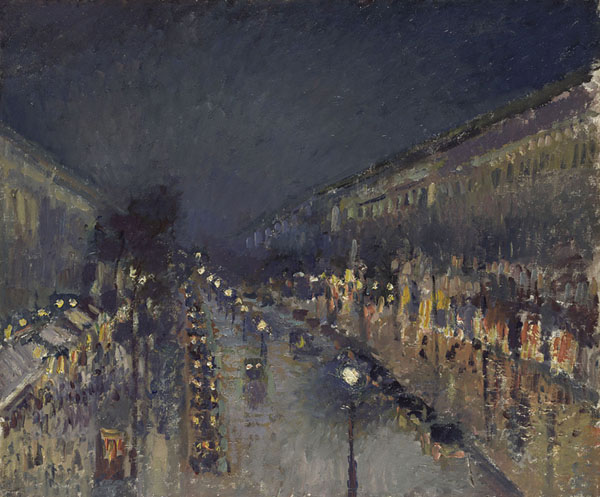
http://www.nationalgallery.org.uk/paintings/NG4119 – Photo courtesy of the National Gallery (CC BY-NC-ND 4.0)
Let’s call all of the above a look at the front side of the house. Behind that are the National Gallery’s workrooms, where conservation, framing, and other work are done, and offices and meeting rooms, where intense (albeit polite) discussions about marketing, communications, branding, and finances are held.
Of the former, the work is painstakingly intricate, whether it’s retouching a painting, removing old varnish from one, crafting a wood frame by hand, or applying gold leaf to one.
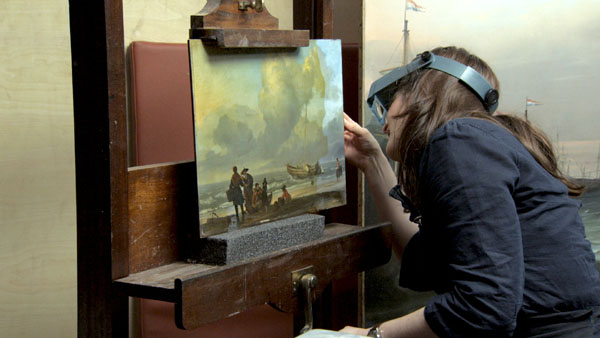
But it is from the fly-on-the-wall scenes of meetings with Nicholas Penny that we get to understand, at least partially, some of the considerations for the National Gallery’s operations and especially its marketing. How should the Gallery’s communications strategy account for the role of visitors and our modern relationships to old masters? What is our, “the end users’,” point of view? Should this vaunted institution be connected with a major sporting event for the sake of exposure to the masses? Would doing so denigrate the Gallery’s brand by exposing it to the lowest common denominator?
Uncomfortable questions and perhaps offensive comments, depending on where you’re sitting, but nonetheless revealing.
Ultimately, it is up to viewers of National Gallery to decide what works and what doesn’t, to take what is useful and leave the rest, regarding the National Gallery through glimpses of its good, bad, and ugly (and beautiful). We are left to develop our own opinions about the place, for while narrative exists, there is no narration on Wiseman’s part, either in the form of on-camera dialogues with an unseen interviewer or in added sound or music (save for during the closing credits).
Whether you’ve visited the National Gallery before or not, you’ve never seen it like this.
National Gallery: A Film by Frederick Wiseman premieres on television this Friday, 21 August 2015, at 9 PM ET, on PBS. (Check your local listings.)
__________________
Add your comments on our Facebook, Google+, and Twitter pages.
Share this post/page.